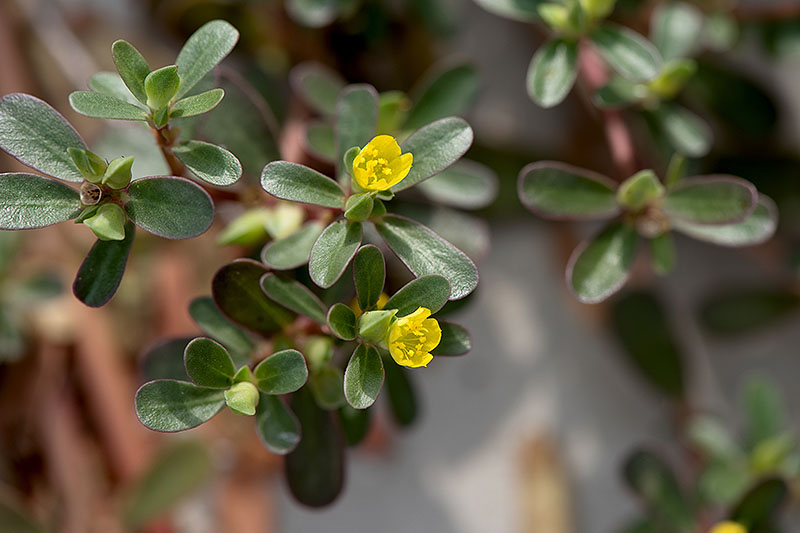As someone who’s grown purslane for years I can tell you that understanding its growing cycle is crucial for successful cultivation. Let me break down everything you need to know about purslane’s return habits and how to manage this fascinating plant in your garden.
The Short Answer
Purslane is primarily an annual plant which means it won’t naturally come back from the same roots year after year. However don’t let this fool you – purslane has some clever tricks up its sleeve for ensuring its survival!
How Purslane Actually Returns Each Year
While the original plant dies after one season, purslane maintains its presence through:
- Prolific Self-Seeding: A single plant can produce up to 240,000 seeds!
- Long-Lasting Seeds: These seeds can remain viable in soil for up to 40 years
- Quick Germination: Seeds sprout readily when soil temps reach 15°C
Different Types of Purslane and Their Return Habits
I’ve experimented with various types of purslane and here’s what I’ve learned about each
Summer/Common Purslane (Portulaca oleracea)
- Annual plant that dies after first frost
- Excellent self-seeder
- Needs sunny spots to thrive
- Can be sown March to September
Winter Purslane (Claytonia perfoliata)
- Annual but aggressively self-seeds
- Appears in two flushes yearly:
- First flush: April to June
- Second flush: August through winter
- Does great in partial shade
Ornamental Purslane
- Annual in most regions
- Perfect for containers
- Produces colorful blooms
- Dies with first hard frost
Growing Zones and Perennial Behavior
Here’s something interesting – purslane’s return habits actually vary by climate:
- Zones 2-8: Strictly annual, dies completely after frost
- Zones 9-11: May act as a short-lived perennial
- Container Plants: Can be brought indoors for winter survival
Tips for Managing Purslane’s Return
Whether you want to encourage or control purslane’s return, here are my tried-and-true tips:
To Encourage Return:
- Let some plants go to seed
- Don’t disturb soil too much in spring
- Maintain well-draining soil
- Plant in full sun locations
To Control Spread:
- Remove plants before they seed
- Pull entire plant including roots
- Use mulch to prevent germination
- Watch for volunteers in pavement cracks
My Personal Experience
In my garden, I’ve found purslane to be pretty predictable. Even though the original plants don’t survive winter, I always get new plants popping up in spring – sometimes in the most unexpected places! I actually love this about purslane – it’s like getting free plants every year without any effort on my part.
Final Thoughts
While purslane won’t technically “come back” as the same plant each year, its amazing ability to self-seed means you’ll likely never be without it once it’s established in your garden. Whether that’s a good thing or not depends entirely on your gardening goals!
Remember – if you’re growing purslane in containers and really want to keep specific plants going, you can always bring them indoors during winter. Just make sure they get plenty of sunlight and don’t overwater them.
Have you had experience with purslane returning in your garden? I’d love to hear about your experiences in managing this fascinating plant!

Protecting Purslane in Winter
Cold temperatures will destroy this succulent before the snow flurries. Purslane can live outdoors during the winter in zones 10 or 11, although the plant should be protected if there is unseasonably cold weather. Covering the plant overnight if the forecast calls for a cold spell will help the plant pull through. If you live in a cold climate and protect Purslane indoors in winter, you can enjoy this plant year-round.
Cutting Back Purslane For Winter
Trim Purslane in preparation for winter. Remove dead growth for plants grown outdoors in warm climates. In cold climates, leave the plant if you want to encourage it to self-seed. Seeds that drop from the plant may germinate in the spring after experiencing the winter chill. All of the growth can be removed after the first frost if you do not want the plant to self-seed.
Portulaca II Will They Come Back Next Year?
FAQ
Does purslane come back every year?
Since it’s an annual, purslane won’t return the following year. It prefers hot, dry conditions, and the first hard frost of the season will kill it. Container plants can be brought indoors for the winter if placed in sun.
Can purslane survive winter?
Where winters stay frost-free, purslane plants can survive year-round. They behave as short-lived perennials in theseregions, coming back from roots and stems season after season. Even in warm climates, purslane still relies on seeds as its primary means of reproduction.
Is purslane a perennial?
The majority of gardeners deal with purslane as a fast-growing summer annual. However, in the warmest zones (9-11), purslane may exhibit perennial tendencies. Where winters stay frost-free, purslane plants can survive year-round. They behave as short-lived perennials in theseregions, coming back from roots and stems season after season.
How long does purslane last?
It completes its entire life cycle from germination to seed production within a single growing season. Here is a quick overview of purslane’s lifecycle: Seeds sprout in spring once soil temperatures reach at least 15°C. Within 6-8 weeks after sprouting, purslane begins flowering. Small yellow blooms appear in early to midsummer.
How long do purslane seeds last?
However, purslane seeds have tremendous longevity in soil – remaining viable for up to 40 years. So new plants readily sprout each spring from this massive seed bank. So while individual purslane plants live just one season, the species persists year after year thanks to prolific seed production.
Does purslane need full sun?
To really thrive and do its best, purslane needs full sun. They also love the heat. But if you want to get flowers to grow, giving the plant some shade or shelter from the sun during the hottest part of the day will help. Indeed, purslane is a member of the succulent family.
